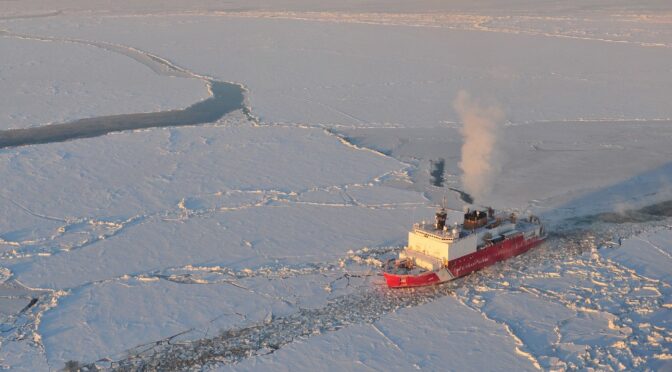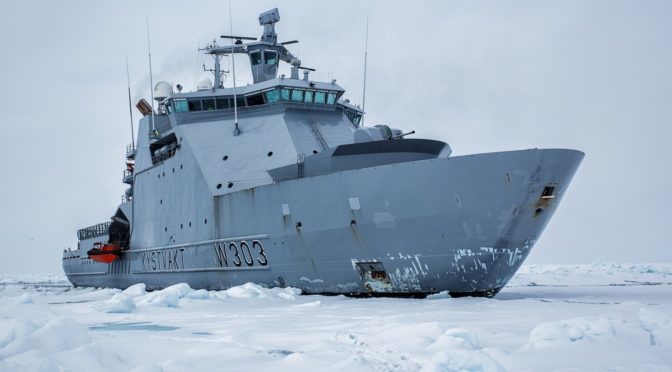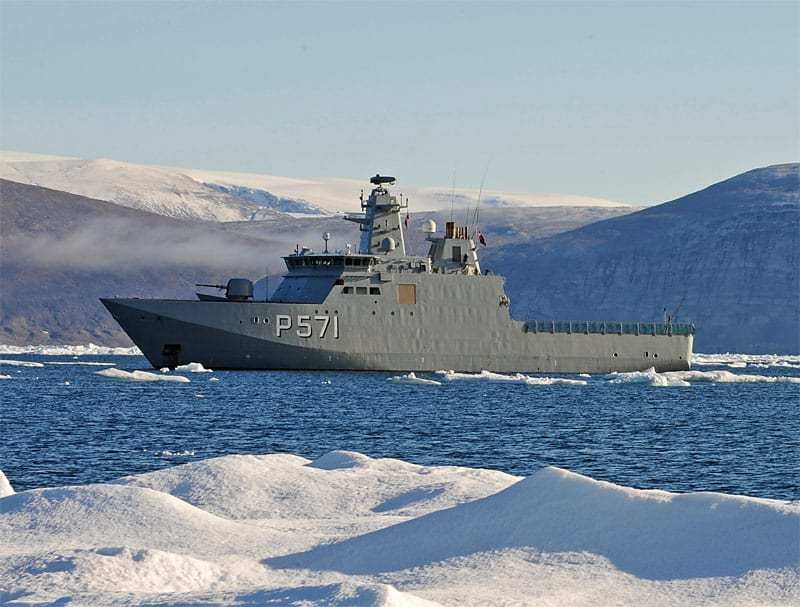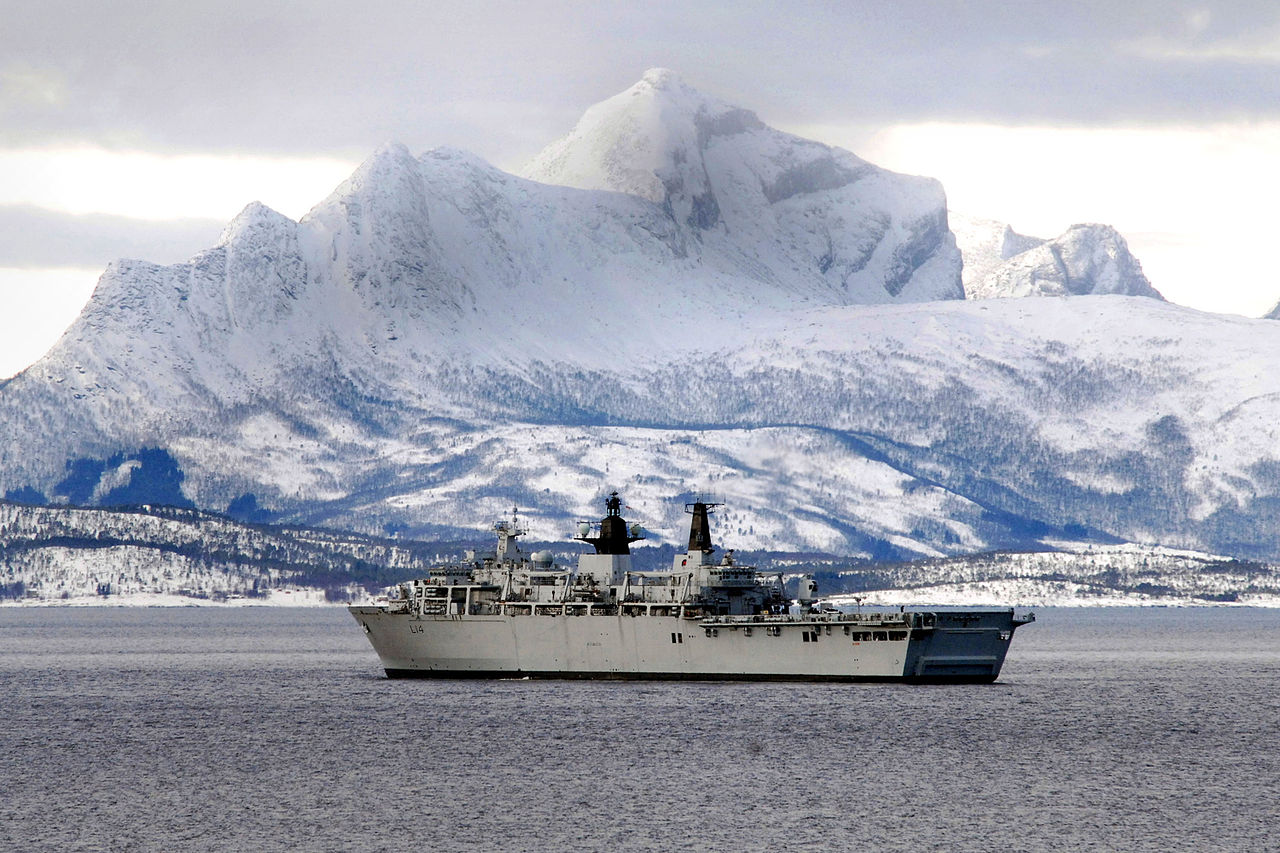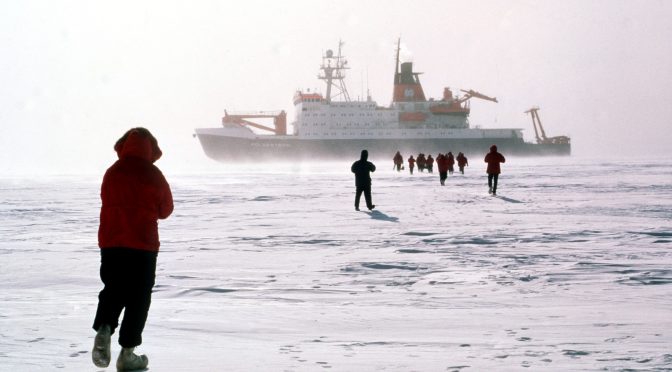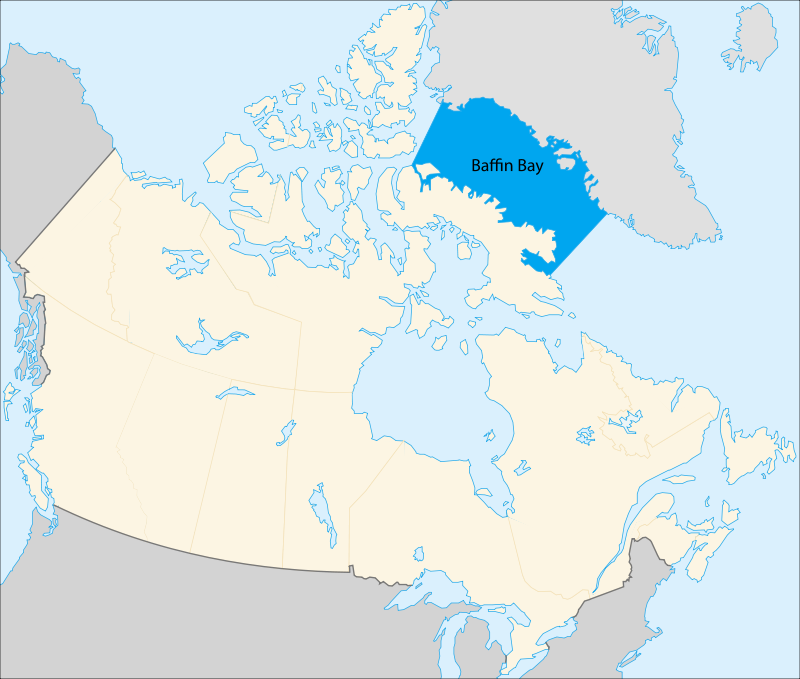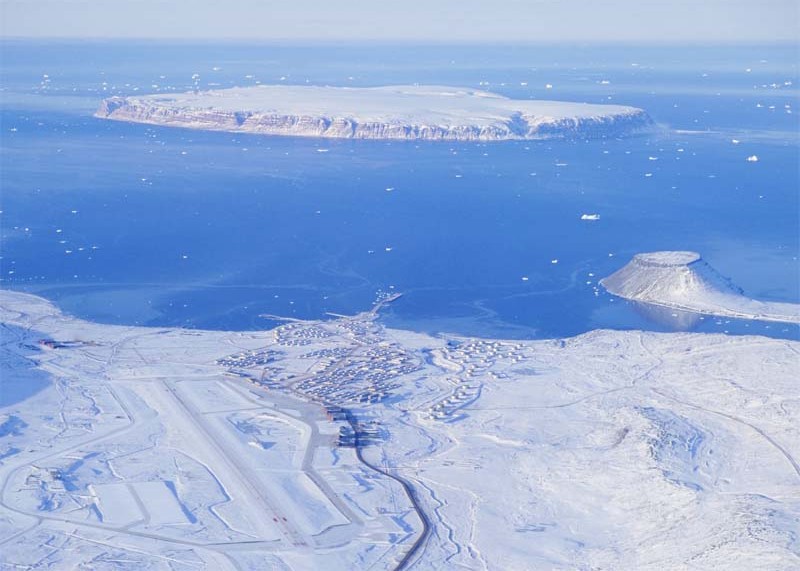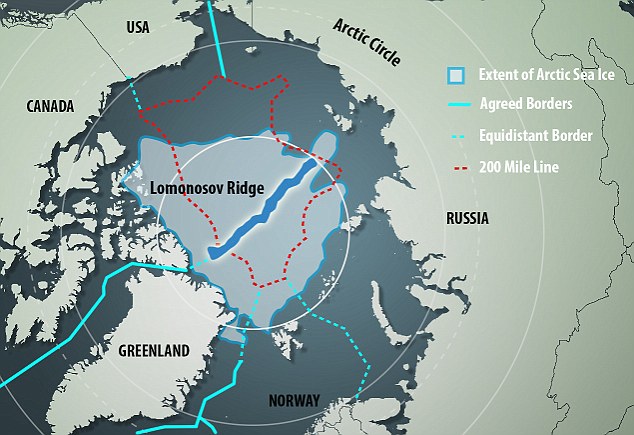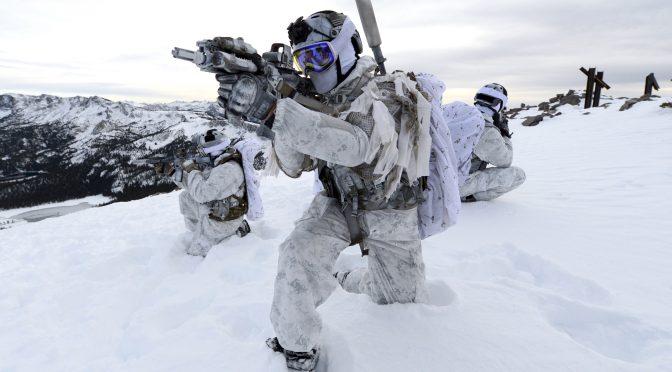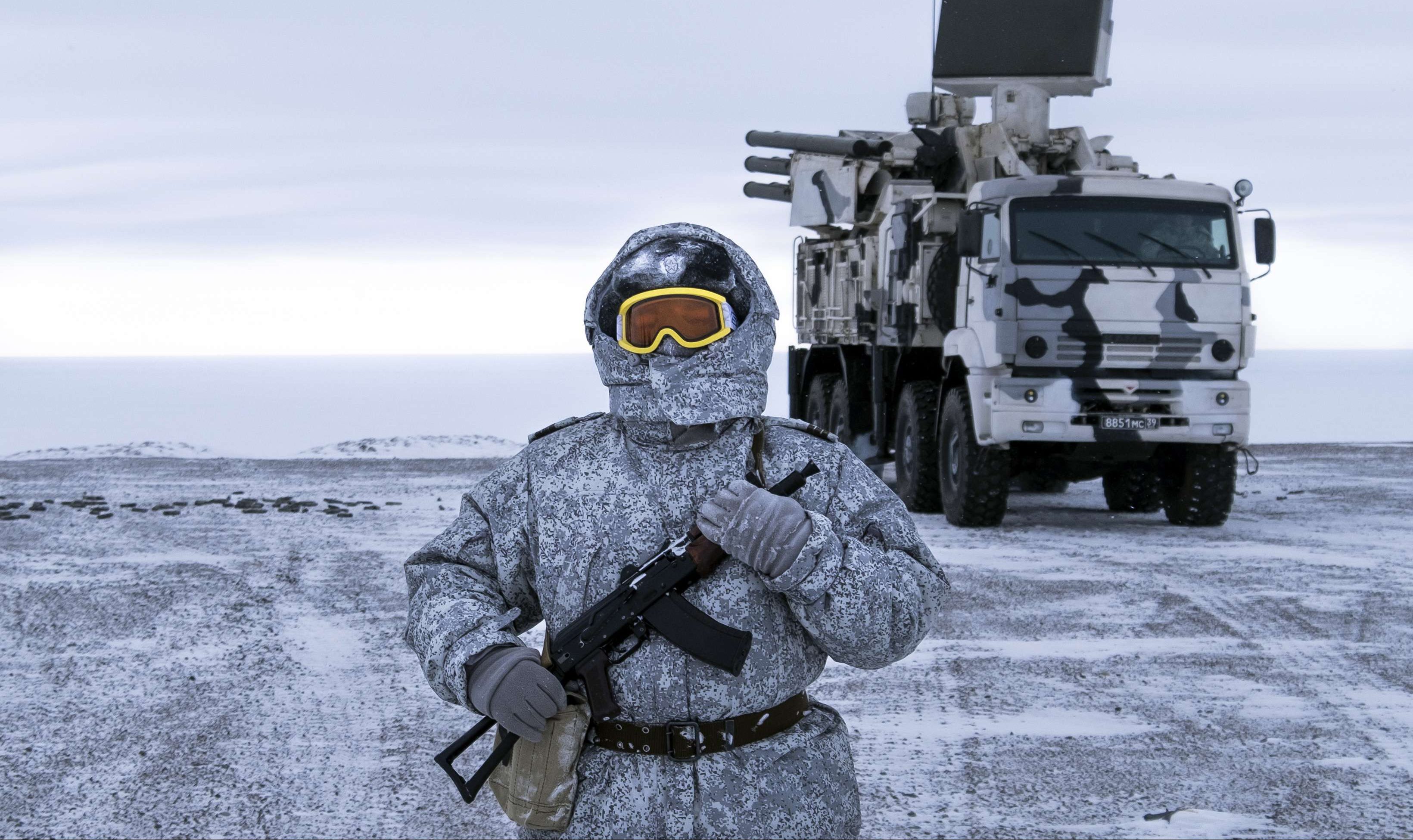By Josh Caldon
Almost weekly there is another story insinuating that the US is losing the “race for the Arctic.” Those who support the claim that the US is losing this race often highlight that the Arctic ice is melting and that this environmental change is opening up potential trade routes and making natural resources more ripe for exploitation. Others then point out that Russia has increasingly re-militarized the Arctic and that China has also made inroads to establish itself in the region.
One key point these articles often make is the United States’ relative lack of icebreakers compared to its competitors. What is missing from this conversation, however, is an explanation of why the US has fallen behind its competitors in the Arctic. This article fills in that gap by attempting to explain why the US is behaving as it does. It then argues that paradoxically falling behind in this regional competition may actually improve America’s overall security and international influence when compared to Russia and China.
Geography
The US is relatively fortunate in its geography. It has large coastlines with natural harbors on both the Pacific and Atlantic Oceans. Its rivers largely flow southward to southern ports. It also shares borders with Mexico and Canada, two countries that do not threaten the US in a conventional sense. This geography serves to protect the US from foreign invasion and allows it to readily deploy military forces to foreign locales, without use of the Arctic.
With the advent of intercontinental missiles and strategic bombers, the Arctic became more important to the US militarily during the Cold War. This pushed the US to erect now largely defunct early warning stations across northern Alaska, Greenland, and Canada. More recently, it established incipient missile defense systems in the Arctic to deal with increased threats emanating from Russia, China, and North Korea and improved its ability to monitor the region. However, these systems have never been designed to control the Arctic, but instead to protect America, and its NATO allies, from foreign military threats coming from, or through, the Arctic. This is an important distinction.
Russia does not share America’s fortunate geographic position. Instead, its geographic positioning and acrimonious international relationships have pushed it to “conquer the Arctic.” It has few “warm-water” ports and shares large land borders with many adversarial states. Russia’s only ports that are free from year-round ice are located in Sevastopol (Crimea), Tartus (Syria), and in the Baltic and Barents Seas. Significantly, Russia has recently fought to maintain control over Sevastopol and Tartus, but still faces possible blockades by adversarial forces in the Black Sea, Mediterranean Sea, and Baltic Sea. Ukraine’s attempt to join NATO, Finland’s recent accession to the alliance and Sweden’s standing bid to join, along with the West’s attempts to overthrow Russia’s surrogate in Syria, Bashar Assad, have heightened Russia’s longstanding fear in this regard.
As a result, since the disastrous Russo-Japanese War of 1905, and especially during WW I and WW II,* and the Cold War, Russia has militarized the Arctic. This is something that it has taken up with renewed vigor under Vladimir Putin’s regime. Russia’s militarization of the Arctic has especially occurred in two spots. The first one is the ice-free Barents Sea, which Russia has relied on to access the world’s oceans so that it can better protect its territory and international interests from foreign threats, and the second one is under the Arctic ice cap where its nuclear submarines have an icy bastion that protects them from NATO forces.
Economics
The US largely has a free-market economy with strong interest groups that challenge its willingness to expand its commercial footprint in the Arctic. This has overwhelmingly kept it from attempting to control the Arctic like Russia has done and China is increasingly attempting to do. It is important to look at the times when American commercial interests have focused on the Arctic to understand America’s overall lack of interest in this region. The three times the US has been economically drawn to the Arctic were to exploit temporarily scarce resources. This occurred with whale oil and seal skins during the 18th and 19th century, gold at the end of the 19th century, and oil during the mid-twentieth century. These intense periods of economic interest in the Arctic resulted in America’s purchase of Alaska from Russia in 1867 and the development of Alaska in the decades afterwards. Notably, however, it is expensive and difficult to operate in the Arctic. As Canadian Arctic expert, Michael Byers highlights, even as the Arctic ice slowly melts, the region remains in complete darkness for half of the year and melting ice is dangerously unpredictable. The Arctic is also austere and quite far from the largest population centers of the world. As such, the intermittent economic demands for the region’s natural resources have relatively quickly resulted in substitutes being found for these goods in less austere places.
Subsequently, the only portions of Alaska that are significantly developed are in the sub-Arctic portion of the state, with the exception of the oil fields of Prudhoe Bay – which also appear to be winding down with the advent of fracking and renewable energy. Increasing environmental concerns (most of Alaska is situated in nationally owned wilderness preserves) and native groups’ claims prohibitively increase the price of resource extraction from most of Arctic Alaska even further. Many Americans believe the region should be left to nature and to indigenous groups. The US also does not have a great need to develop the sea routes in the Arctic to improve its international trade. It has a transnational road and railway system and easy access to maritime trade routes which are connected through the recently enlarged Suez Canal. These circumstances mean that the US has very little motivation to establish sea routes through the largely uninhabited, relatively shallow, and dangerously unpredictable Arctic Ocean. Finally, Russia’s aggression over the last two decades, and increasing pressure from environmentally-based NGOs, have pushed American-based companies even further away from Russia’s Arctic.
All told, since the US has only marginal economic incentives to pursue the Arctic, it has not felt the need to develop harbors, settlements, transport infrastructure, or icebreakers to increase its footprint in the region. As such, it has relatively little capability to “conquer the region,” but also relatively little to defend in the region.
This is not the case for Russia or China. Russia suffers from what Hill and Gaddy call the Siberian Curse. Its geography is not as economically favorable as America’s, which has forced it to turn towards the Arctic to improve its economic circumstances. However, it has also traditionally operated a state-controlled economy that uses slave labor and nationally owned corporations to mask the economic, environmental and demographic costs of operating in the Arctic. Beginning with the czars, and accelerating under Russia’s Soviet dictators, Russia forcibly sent millions of people to develop and “conquer the Arctic.”
This legacy continues today as Putin pushes and subsidizes Russia’s economic ministries and state-controlled corporations to extract more resources from the Arctic and to expand the infrastructure of the Northern Sea Route (with the numerous powerful icebreakers needed to navigate this waterway) to transport these resources to distant markets. Unlike American corporations, Russia’s economic pursuits in the Arctic are not concerned with environmental or indigenous considerations either. Furthermore, Russia’s extreme sacrifices in the Arctic have made developing and controlling it symbolic for its people and leadership. As such, Russia has much more to defend materially and ideationally in the Arctic than the US does. Even with these factors pushing Russia to conquer the Arctic, Russia’s regional ambitions have been challenged by fiscal, demographic, and environmental hurdles. Most recently, the war in Ukraine has forced it to curtail its ambitious Arctic railway and icebreaker projects and to mobilize and sacrifice a significant proportion of its Arctic troops for combat in Ukraine. Additionally, many of its Arctic cities have rapidly de-populated, and the Arctic melt has paradoxically threatened its existing Arctic infrastructure.
Like Russia, China’s companies are largely nationalized and it also does not have the environmental or indigenous concerns in the Arctic that the US does. It has spent the last two decades increasing its manufacturing sector and its international trade ties. This has increased its needs for natural resources and trade routes, resulting in its plans to establish a “Polar Silk Road,” under its greater Belt and Road Initiative, in order to link the Arctic to China’s greater network of international trading posts and manufacturing centers. As Russia has lost access to Western markets and technology over the last two decades, it has increasingly turned towards an eager China to help it build out its Arctic economic footprint. As such, China also has more economic interests to defend in the Arctic than the US does.
What Does This Mean for the US?
The United States is not truly interested in competing for the Arctic. It has relatively less military, economic, or ideational interest in the region when compared to Russia or China. Its strategic plans for the region have become increasingly assertive in reaction to Russia’s and China’s efforts, but lack funding or prioritization. However, this lack of genuine interest carries some benefits for the US when considering the larger geopolitical context of the international system.
America’s lack of interest in the region has paradoxically pushed the other Arctic states to increase their security ties with the US and to take on more security responsibilities for the region. Similar to World War II, when Iceland and Denmark invited the US to help protect their territory from foreign adversaries, Russia’s aggression pushed Sweden and Finland to formally petition to join the US-dominated NATO. The inclusion of these states into the organization means that half of the Arctic will soon be administered by NATO member states.
Specifically, the Nordic states of Norway, Sweden and Finland have significant capabilities and economic stakes in the region that will make up for America’s relative lack of willingness and ability to contain Russia’s and China’s ambitions in the region. These countries’ capabilities will be further complemented by Denmark and Canada, and the other non-Arctic NATO states that have recently increased their defense spending to deal with Russian aggression. This collective defense in the Arctic will allow the US to better focus on domains like space, cyberspace, the Americas, and the Indo-Pacific, which are more important than the Arctic to America’s most critical national interests.
Economically speaking, the Arctic will likely remain a backwater for market-driven economies for the foreseeable future. The relatively high costs of extracting resources and transporting goods from the Arctic means the region is unlikely to become much more attractive for Western companies, even if the ice continues to retreat (which has slowed in recent years) and icebreakers improve, except in times when specific resources are in sharp demand or when there are long-term bottlenecks in other trade routes.
The resources that Russia and China extract from the Arctic will contribute to the overall global supply of these resources and decrease their overall price for American consumers. As such, Americans will gain many of the benefits of Russia’s and China’s efforts in the Arctic while Russia and China absorb the costs. In the case of scarce rare-earth minerals that have spiked in demand and are monopolized by China, it appears Sweden may fill this void for the US with its own Arctic resources, even as companies search for substitutes for these critical resources.
Overall, the US should not ignore the Arctic, and it should put to rest the notion that this region is a unique zone of peace in an otherwise quite turbulent world. That being said, Americans should also not deem that losing the “race for the Arctic” will critically threaten America’s larger national interests. By not attempting to compete head-to-head with Russia or China to “conquer” the region, the US has incurred some advantages against these competitors.
As the US has been reminded again in Iraq and Afghanistan, and through its observation of Russia’s disastrous invasion of Ukraine, conquering territory comes with significant costs that can weaken the material strength and ideational attractiveness of a country. This, in turn, weakens a country’s ability to secure its most significant national interests. The US should continue to diplomatically, militarily, and economically challenge Russia’s and China’s actions in the Arctic on humanitarian and environmental grounds, but it also should identify that China’s and Russia’s actions in the Arctic come with high economic and soft power costs that may relatively benefit the US. Doing so will allow the US to increase its ability to collectively defend its interests in the Arctic with its allies and to prioritize its attention and resources on domains that are more important to it than the Arctic.
Josh Caldon is an adjunct professor at the Air University where he instructs courses in national security. He received his PhD in Political Science from the University of Albany and is a veteran of the USAF. The views in this article are his alone and do not necessarily reflect the views of the US Government, or its subsidiary agencies.
* Interestingly, the US was responsible for a significant portion of Russia’s militarization of the Arctic during World War II and went from supplying friendly Russian forces through the Arctic during WW I to fighting them in the Russian Arctic after the Bolshevik Revolution.
Featured Image: A U.S. Coast Guard ship breaks ice near Nome, Alaska. (Credit: Charly Hengen/USCG)

